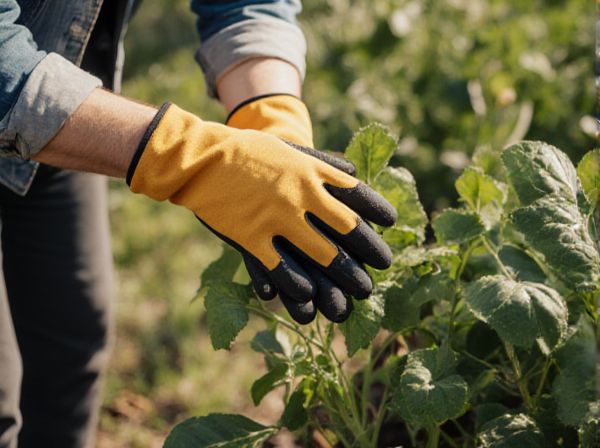
Hand Harvesting vs Machine Harvesting Illustration
Hand harvesting allows for selective picking, ensuring only ripe crops are gathered, which preserves quality and reduces waste. Machine harvesting significantly increases efficiency and speed, covering larger areas with less labor but may cause more damage to delicate produce. Choosing between methods depends on crop type, scale of operation, and cost considerations.
Table of Comparison
| Aspect | Hand Harvesting | Machine Harvesting |
|---|---|---|
| Speed | Slow, labor-intensive | Fast, high-volume |
| Cost | High labor costs | High initial investment, lower labor cost |
| Precision | High, minimal crop damage | Moderate, potential for crop damage |
| Labor Requirement | Skilled manual labor needed | Operator and maintenance staff |
| Suitability | Small farms, delicate crops | Large-scale farms, durable crops |
| Environmental Impact | Low, minimal soil disturbance | Higher fuel use and soil compaction |
| Harvest Consistency | Varies with labor skill | Consistent, machine-controlled |
Introduction to Hand vs Machine Harvesting
Hand harvesting offers precision and selective picking, preserving crop quality and reducing damage, especially for delicate fruits like grapes and berries. Machine harvesting significantly boosts efficiency, enabling rapid collection of large-scale crops such as wheat, corn, and cotton while lowering labor costs. The choice between these methods depends on crop type, terrain, and economic factors influencing yield and quality outcomes.
Key Differences Between Hand and Machine Harvesting
Hand harvesting offers precise selection and minimal crop damage, essential for delicate fruits and specialty crops, while machine harvesting significantly increases efficiency and reduces labor costs by processing large volumes rapidly. Hand harvesting demands more labor intensity and time, often leading to higher operational costs, whereas machines require substantial initial investment and maintenance but provide consistency and scalability. Crop type, terrain, and harvest quality requirements are critical factors influencing the choice between hand and machine harvesting methods.
Efficiency and Speed in Harvesting Methods
Hand harvesting offers precise crop selection and minimal damage, making it ideal for delicate produce but is labor-intensive and slower compared to machine harvesting. Machine harvesting significantly increases efficiency and speed by covering large areas quickly, reducing labor costs and time, though it may cause higher crop damage and is less selective. The choice between methods depends on crop type, field size, and the balance between quality and operational speed.
Impact on Crop Quality and Yield
Hand harvesting preserves crop quality by minimizing physical damage and allowing selective picking, which enhances the overall market value of produce. Machine harvesting increases efficiency and yield through rapid collection but can cause bruising and damage, potentially reducing quality and shelf life. Balancing hand and machine methods depends on crop type and desired quality standards to optimize both yield and marketability.
Labor Requirements and Costs
Hand harvesting demands significantly higher labor input, requiring skilled workers to pick crops carefully, leading to increased labor costs. Machine harvesting reduces labor needs drastically by automating crop collection, which lowers overall expenses but involves substantial initial investment and maintenance costs. This trade-off between labor intensity and capital expenditure shapes the economic decisions for farmers depending on crop type, scale, and market conditions.
Environmental Considerations in Harvesting
Hand harvesting minimizes soil compaction and preserves biodiversity by reducing disturbance to the surrounding ecosystem, making it environmentally preferable for sensitive crops and terrains. Machine harvesting, while efficient, often leads to increased fuel consumption and greenhouse gas emissions, contributing to air pollution and soil degradation. Sustainable harvesting practices prioritize reduced environmental impact, balancing productivity with conservation through methods such as selective hand picking and using low-emission machinery.
Suitability for Different Crop Types
Hand harvesting remains ideal for delicate crops like grapes, berries, and specialty herbs where precision and minimal damage are critical to maintain quality. Machine harvesting excels for large-scale grains such as wheat, corn, and soybeans, providing efficiency and speed that hand labor cannot match. Crop selection often determines the method, as machine harvesting suits robust, uniform crops while hand harvesting supports uneven terrain and fragile produce.
Technological Innovations in Harvesting
Technological innovations in harvesting have revolutionized both hand and machine harvesting methods, enhancing efficiency and crop quality. Advanced sensors and automation integrated into machine harvesters enable precise picking with minimal crop damage, while mobile apps and wearable tech assist hand harvesters in optimizing labor productivity and post-harvest tracking. The adoption of AI-driven robotics and GPS-guided machinery further accelerates harvesting speed and reduces reliance on manual labor, promoting sustainable agricultural practices.
Challenges and Limitations of Each Method
Hand harvesting ensures precise crop selection and minimal damage but faces challenges like high labor costs, slow operation, and labor scarcity. Machine harvesting offers speed and efficiency yet struggles with terrain limitations, crop-specific adaptability, and potential increased crop damage. Both methods require balancing cost, environmental impact, and crop quality for optimal yield management.
Choosing the Best Harvesting Method for Your Garden
Hand harvesting offers precise selection of ripe produce, minimizing damage and ensuring crop quality, ideal for small gardens or delicate fruits. Machine harvesting significantly boosts efficiency and reduces labor costs for large-scale operations but may cause bruising or miss less uniform crops. Assess garden size, crop type, and budget to determine the most effective harvesting method that balances quality and productivity.
Hand Harvesting vs Machine Harvesting Infographic

 gardendif.com
gardendif.com